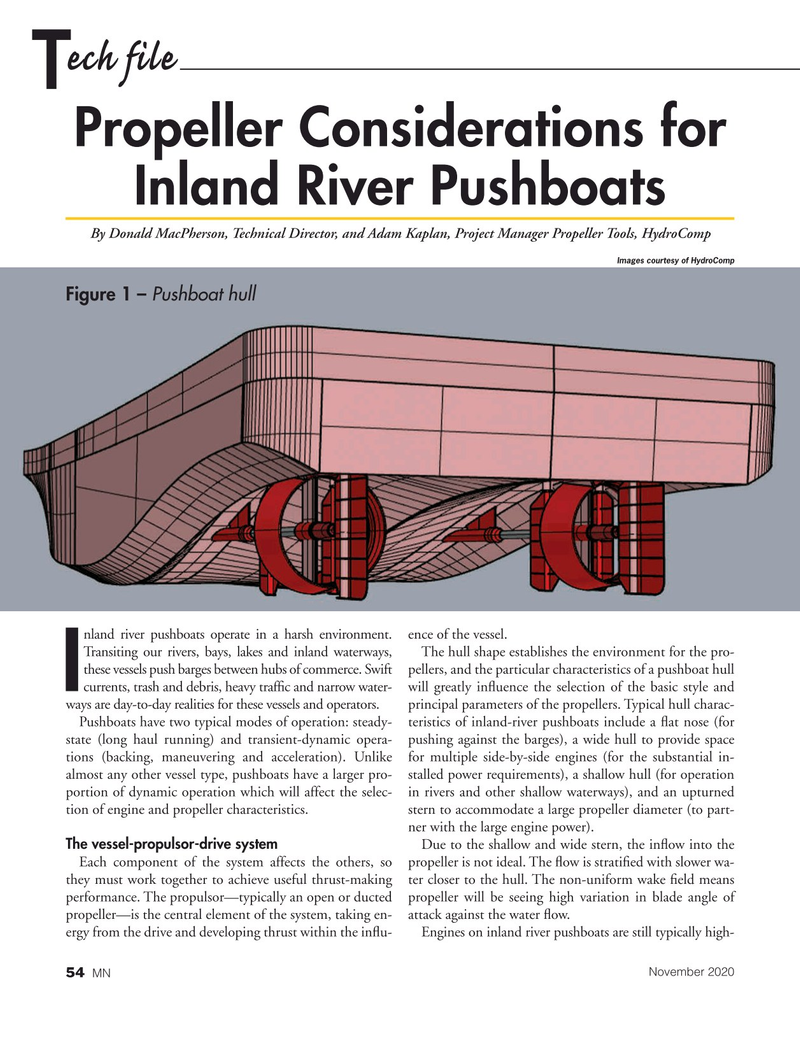
Page 54: of Marine News Magazine (November 2020)
Workboat Annual
Read this page in Pdf, Flash or Html5 edition of November 2020 Marine News Magazine
ech file
T
Propeller Considerations for
Inland River Pushboats
By Donald MacPherson, Technical Director, and Adam Kaplan, Project Manager Propeller Tools, HydroComp
Images courtesy of HydroComp
Figure 1 – Pushboat hull nland river pushboats operate in a harsh environment. ence of the vessel.
Transiting our rivers, bays, lakes and inland waterways, The hull shape establishes the environment for the pro- these vessels push barges between hubs of commerce. Swift pellers, and the particular characteristics of a pushboat hull currents, trash and debris, heavy traf? c and narrow water- will greatly in? uence the selection of the basic style and
I ways are day-to-day realities for these vessels and operators. principal parameters of the propellers. Typical hull charac-
Pushboats have two typical modes of operation: steady- teristics of inland-river pushboats include a ? at nose (for state (long haul running) and transient-dynamic opera- pushing against the barges), a wide hull to provide space tions (backing, maneuvering and acceleration). Unlike for multiple side-by-side engines (for the substantial in- almost any other vessel type, pushboats have a larger pro- stalled power requirements), a shallow hull (for operation portion of dynamic operation which will affect the selec- in rivers and other shallow waterways), and an upturned tion of engine and propeller characteristics. stern to accommodate a large propeller diameter (to part- ner with the large engine power).
The vessel-propulsor-drive system Due to the shallow and wide stern, the in? ow into the
Each component of the system affects the others, so propeller is not ideal. The ? ow is strati? ed with slower wa- they must work together to achieve useful thrust-making ter closer to the hull. The non-uniform wake ? eld means performance. The propulsor—typically an open or ducted propeller will be seeing high variation in blade angle of propeller—is the central element of the system, taking en- attack against the water ? ow.
ergy from the drive and developing thrust within the in? u- Engines on inland river pushboats are still typically high-
November 2020
MN 54

 53
53

 55
55
